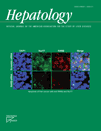Reply†
Potential conflict of interest: H.L.A. Janssen received grants from and is a consultant for Bristol-Myers Squibb, Gilead Sciences, Novartis, Roche, and Schering-Plough. Vincent Rijckborst is a consultant for Roche.
We thank Piratvisuth and Marcellin for their valuable contribution to the debate. First of all, it is important to note that our findings of a more pronounced hepatitis B surface antigen (HBsAg) decline in hepatitis B e antigen (HBeAg)-positive patients with a response to peginterferon were confirmed in their study, reflecting the induction of an immune response in these patients.1
Their analysis shows that failure to achieve a decline in HBsAg levels through 12 weeks of therapy does not predict nonresponse as well in their cohort as it did in our study. Possible explanations for these discrepant findings could be the type of peginterferon or duration of therapy, as suggested by Piratvisuth and Marcellin. However, the most probable explanation is the difference in hepatitis B virus (HBV) genotype distribution between the study cohorts. Preliminary data from our group show that HBsAg decline among HBeAg-positive patients treated with peginterferon is strongly related to HBV genotype.2 These differences across genotypes, particularly among patients who fail to achieve a response, may be an important determinant of the performance of a threshold-based stopping rule. Consequently, the performance of any threshold is primarily dependent upon the distribution of HBV genotypes in the study cohort.
The importance of HBV genotype when applying stopping rules for peginterferon therapy in chronic hepatitis B was recently illustrated by a validation study of our stopping rule for HBeAg-negative patients. This stopping rule, recommending discontinuation of peginterferon in patients who fail to achieve a decline in HBsAg and a decline in HBV DNA of >2 log at week 12, was based on a cohort of mostly genotype D patients.3 When validated in two independent study cohorts, performance was best in genotype D patients treated with either 48 or 96 weeks of peginterferon.4
In conclusion, monitoring of HBsAg levels during peginterferon therapy of chronic hepatitis B may provide valuable insight into a patient's probability of achieving a response. However, it appears that differences in HBsAg decline across HBV genotypes have to be taken into consideration. A pooled analysis of the data from our respective studies, stratified by HBV genotype and possibly incorporating HBV DNA levels, appears to be a crucial next step.
References
Milan J. Sonneveld*, Vincent Rijckborst*, Harry L.A. Janssen*, * Department of Gastroenterology and Hepatology, Erasmus MC University Medical Center, Rotterdam, The Netherlands.




